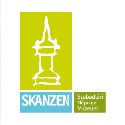Museum compass 23.
Modern Museum Interpretation
Edited by Ibolya Bereczki, Noémi Népessy
The issue is downloadable here.
Introduction
What makes museum interpretation modern? Do museums need to be modernised? What are the possible and desirable forms of representing museum contents? How can museum professionals prepare for the changes of the visitors’ needs? How do museum goers react to the changes? Can museum professionals reach the wide range of people, who are yet to become museum goers, by utilising the new tools and methods? What role can museums play in improving the quality of life of the disadvantaged and disabled visitors and the marginalised social strata? How can our potential audience be involved in the creation and operation of museum contents, on a deeper level than ever before? A multitude of questions arise regarding the theme and the title, and our hope was to provide answers to quite a few of these questions on the pages of our volume.
The priority project Museum and Library Development for Everyone (EFOP-3.3.3- VEKOP-16-2016-00001), was realised between 1 February 2017 and 31 January 2020, through the leadership of the consortium of the Museum Education and Methodology Centre of the Hungarian Open Air Museum, and the consortium membership of the Szabó Ervin Library in Budapest. A major role among the activities of the project element Our Museum, aiming at offering the museums methodological support, was played by The service-oriented museum, methodological research and development, the main results of which were published in Volume 19 of the Museum Compass in 2019 (accessible in electronic form at the following link: http://mokk.skanzen.hu/20190903muzeumi-iranytu-19.html).
During the project, the issue of modern museum interpretation represented a relevant part of the methodological research, since the activities of the museums have turned towards the visitors and their communities more and more markedly in recent decades. We must not forget about the main activity as the most important aspect – its starting point being the collection of the museum, the building, preservation, scientific processing and the publication of it in a way that offers experience – its responsibility and calibre must be given proper consideration. Still, coming closer to our theme, we can see that the modernisation of our publication methods and our range of tools has become vital. The notion of interpretation itself related to museums must be clarified, as well as the types of interpretation, and the process of its change must be examined too. We must pay attention to the qualities and the needs of our stakeholders, with particular regard to the museum visitors. We must find the obstacles that prevent access to the museum contents: is it for physical, geographical, financial or other reasons that wide ranges of people drop out of today’s ever growing groups of museum visitors and attendees at museum education or museum andragogy activities.
An independent area within the topic of The service-oriented museum, was modern museum interpretation, in the framework of a quantitative, qualitative and in-depth interview research, conducted in 2017. We searched for an answer to the role of the curator and the forms of cooperation between museums in the course of creating and running an exhibition – as the most important form of interpretation. It is the museum educators who have the most and the deepest contact with the various visitors’ groups and we examined the possibilities for their involvement in the design and implementation of an exhibition. The results of the research were promising but did not show a breakthrough in the processes of change. The interviews shed light on quite a few reasons, attitude as an obstacle being smaller and smaller, at the same time, financial limits still hinder the process of modernisation of many museum institutions.
Our relevant pilot projects, the study trips, organised in the framework of the priority project, and the international and domestic conferences, brought several results (they can be accessed in electronic form here: http://mokk.skanzen.hu/mintaprojektek-bemutatasa.html). All these can show the right directions in recognising and applying interpretation possibilities in the future. The toolkit of the digital area is getting richer and richer, and today numerous good practices, ones that have been developed in the museum world in Hungary and can be adapted or can inspire to find new solutions, are available to the museum professionals. Living history is being more and more emphasised in offering the visitors museum experiences and generating long lasting effects. We must not ignore the museum spaces, the buildings, or the appearance of the exhibitions either, without which the visitors today do not feel they are in the 21st century. Renewal, based on several excellent international examples, but also as an independent product of Hungarian development, is essential.
The studies in our volume provide a comprehensive analysis of the experience regarding the theme of our research conducted in 2017, recommendations and suggestions are made, and the main theoretical aspects and the current trends of modern museum interpretation are summarised. It is an exceptionally wide-ranging theme, so the creation of a complete methodology could not be set as a goal. Our intention, beyond giving a comprehensive analysis, was for the essays of the authors to capture the particular qualities of the topics, and to find answers – including methods, too – to the questions that were posed in the introduction.
Dr. Ibolya Bereczki
professional leader
deputy director general, responsible for sectoral tasks
Hungarian Open Air Museum





